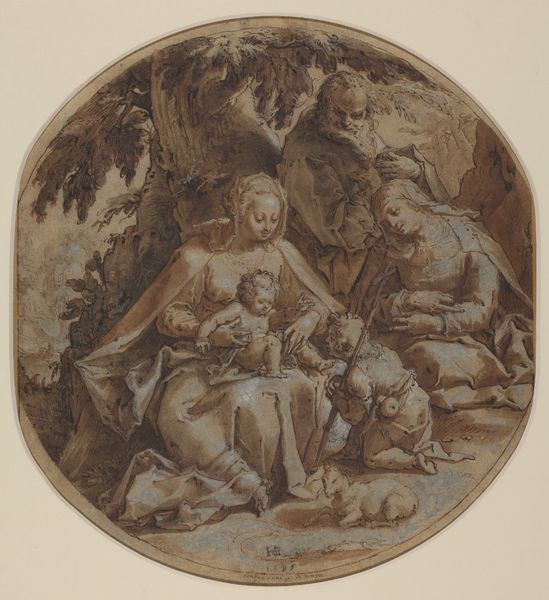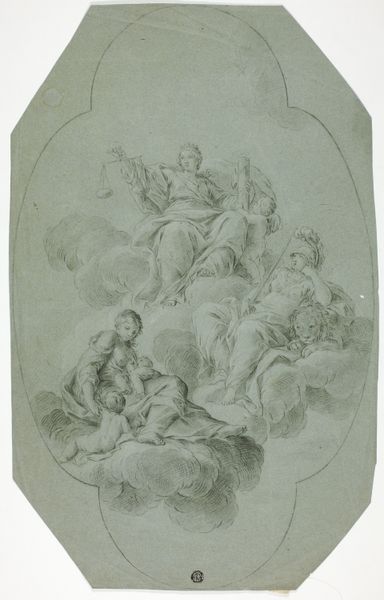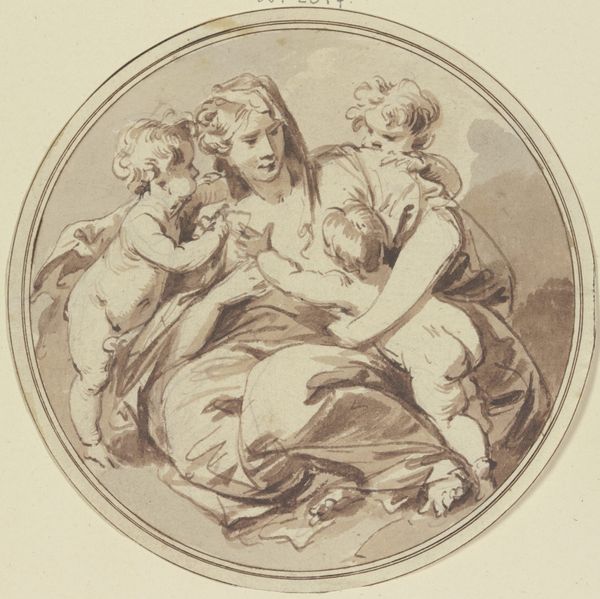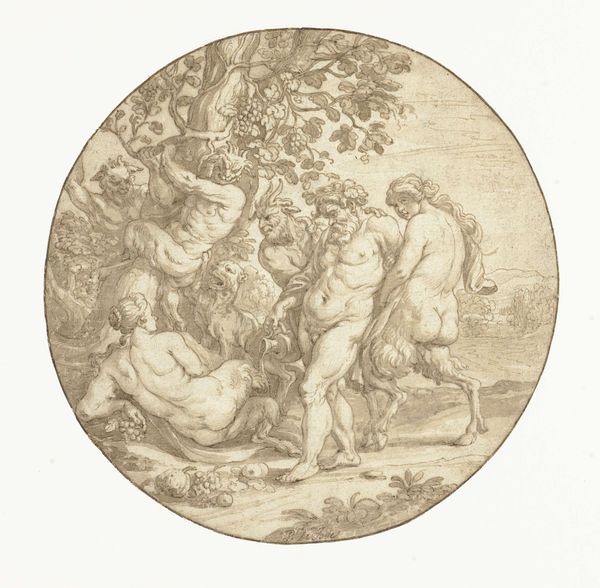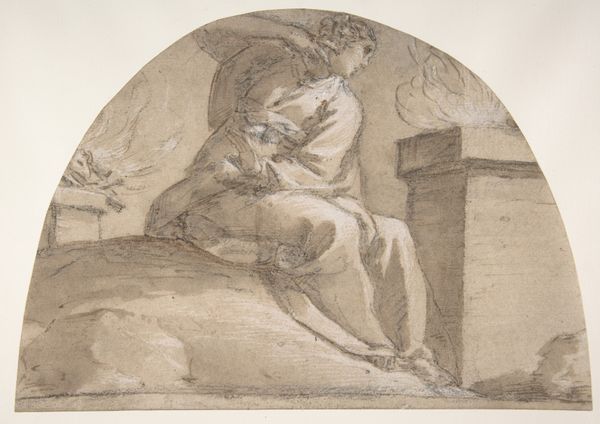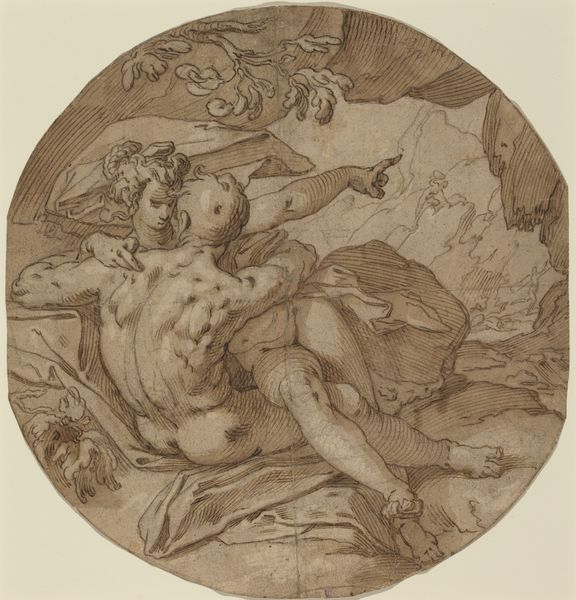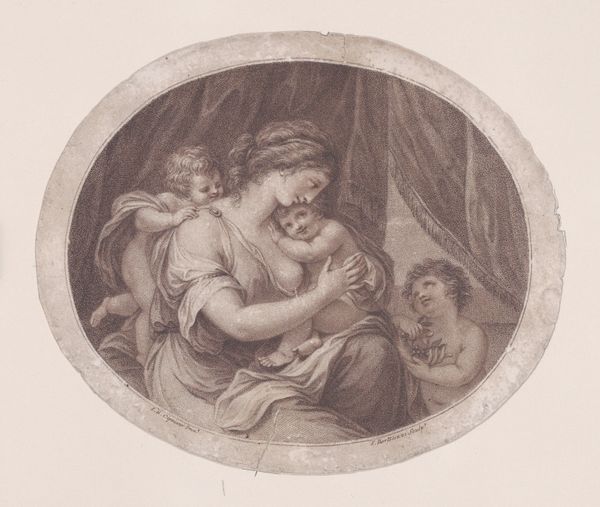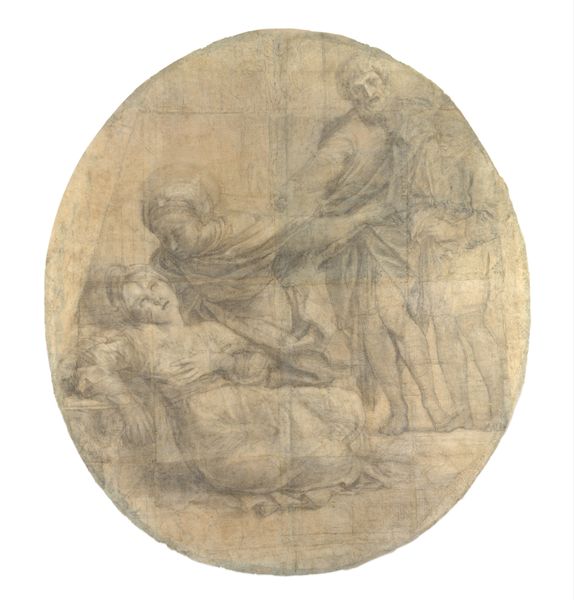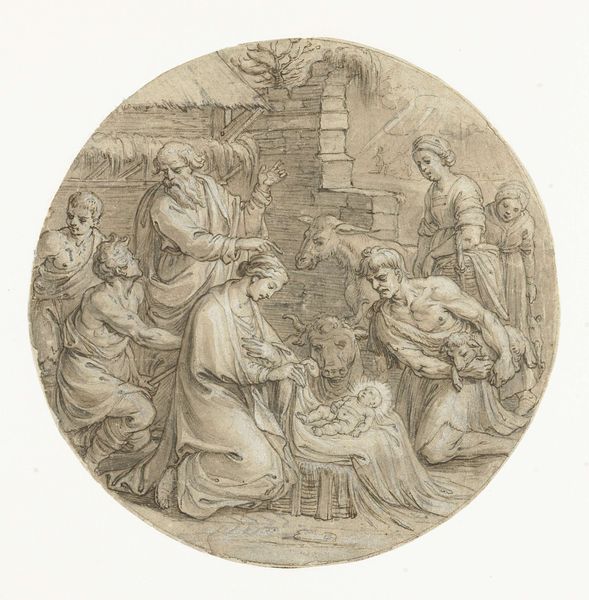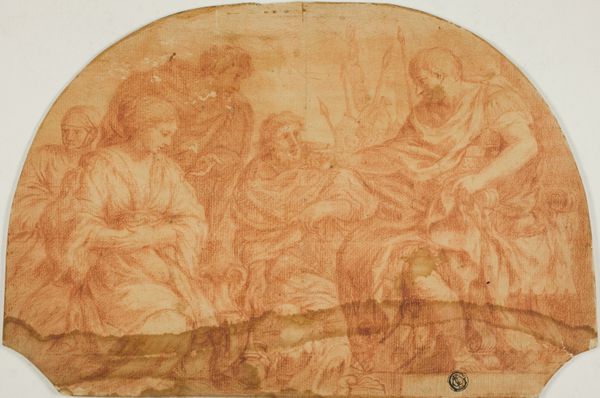
drawing, print, pen, engraving
#
portrait
#
drawing
#
allegory
#
baroque
# print
#
charcoal drawing
#
charcoal art
#
cross
#
pencil drawing
#
pen
#
portrait drawing
#
history-painting
#
engraving
Dimensions: 7-1/4 x 8-3/4 in. (18.4 x 22.2 cm)
Copyright: Public Domain
This round drawing, made with reddish-brown chalk by an anonymous artist, captures a male saint lost in ecstasy. It’s fascinating to consider how the concepts of sainthood and religious experience have been shaped through art history. During this period, the Catholic Church played a central role in defining moral and social norms. Saints, often depicted in states of heightened emotion or divine communion, served as models of ideal behavior, reinforcing prevailing ideas about piety. The saint’s upward gaze and open posture, surrounded by cherubic figures, convey a sense of transcendence. Yet, representations of male ecstasy in religious art can also be viewed through a lens of gender and power. Historically, women were often associated with heightened emotionality, contrasting with a more rational masculinity, yet this image suggests an alternative narrative. How might this portrayal of male rapture challenge or uphold prevailing gender norms within the context of religious art? What does it mean to see a man in such a vulnerable, expressive state, and how does this intersect with the power dynamics inherent in the Church?
Comments
No comments
Be the first to comment and join the conversation on the ultimate creative platform.
